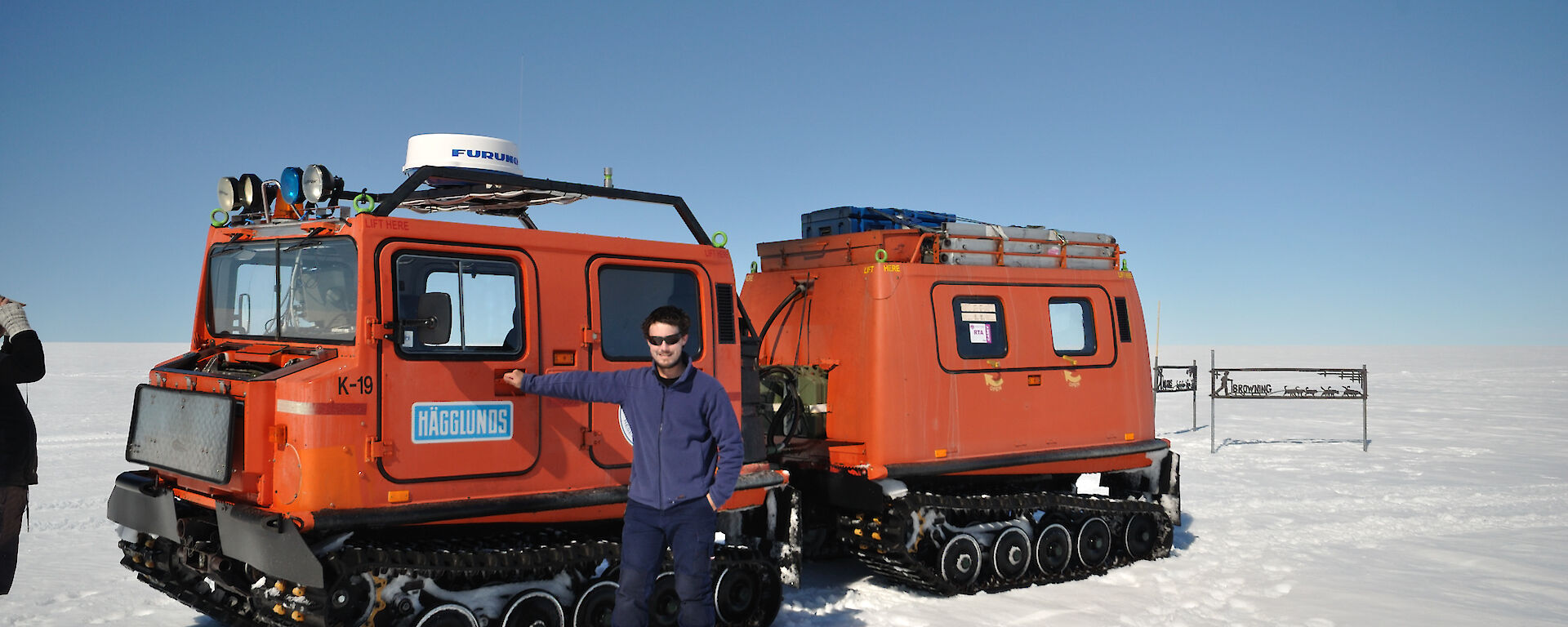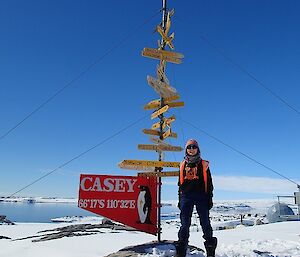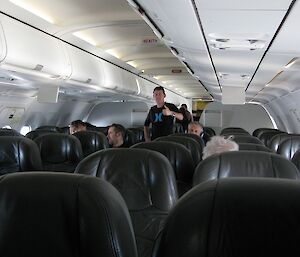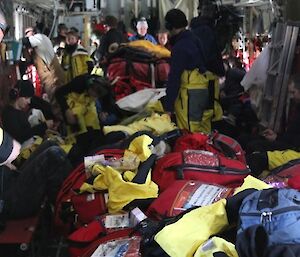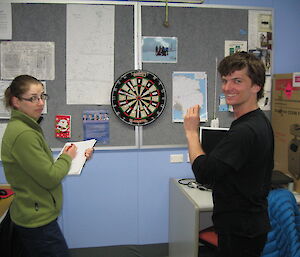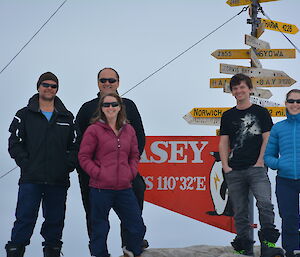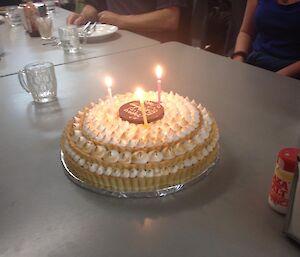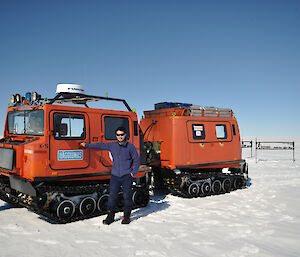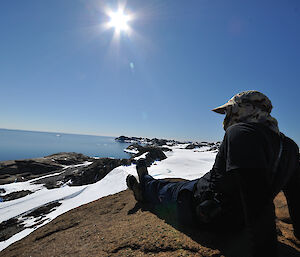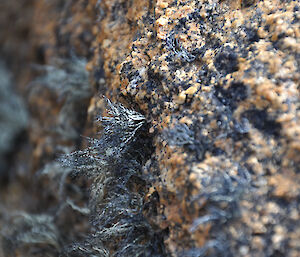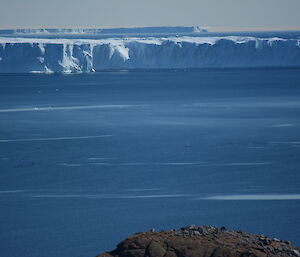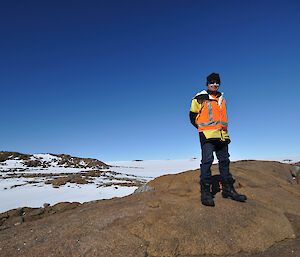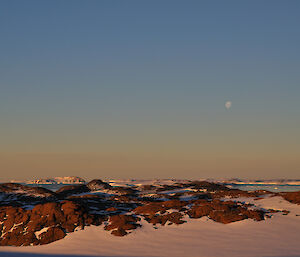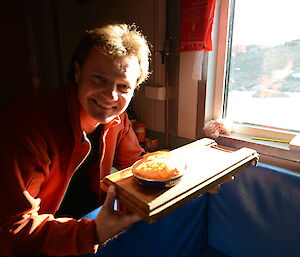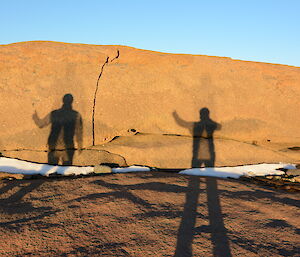What’s the first thing that comes to mind when you think of weather in Antarctica?
Cold.
Cold and snow.
Cold, wind and lots of snow and ice. Yeah.
For most Australians, the kind of weather seen here at Casey station is a completely foreign concept, but in the summer months, it can be a lot like the Australian ski fields; temperatures around −5 to +5°C, melting slushy snow and patches of ice. But then it can turn around and be very different; 50 plus knot winds whipping up blizzards, white-out conditions… and 15 to 20 cm snowfalls of powdery goodness (let’s face it, how often do we see that on our slopes?).
It’s all incredibly changeable, making activities outdoors and away from the safety of permanent research stations something of a challenge. Wouldn’t it be great if there were some weather professionals on hand to help with planning… oh, wait.
Each year, the Bureau of Meteorology sends teams of such weather professionals (who, if they like you, will graciously respond to ‘weather nerds’ or ‘weather guessers') to the AAD’s three research stations to support operations there. The teams consist of observers (the masters of now), forecasters (the masters of later) and a technical officer (master of the machine that should go ping). The forecasters depart at the end of summer, while the observers and technical officer stay on for the winter.
At Casey, the team consists of two observers, one technical officer and two forecasters. On 8 November, after a month and a half of training and pre-season support, summer forecasters Jane and Lena joined as part of the early season insertion of expeditioners. Naturally the weather was not an issue for the journey, with all excited to board the spacious and well appointed United States Air Force C130 Hercules a mere hour after disembarking the hum drum of the AAD chartered Airbus A319.
Work began straight away, with support provided to operations on station, preparations at Wilkins ice runway (70 km and a three hour drive away) and for a cargo flight from McMurdo. The observers and technical officer from the previous winter (Michael, Abrar and Leon) were there to provide much needed experience on the snow conditions and the local weather effects, before handing over to the incoming chaps. Steve, Dan and Krzysztof arrived on 28 November — the first Hobart-Wilkins A319 flight of the season and the earliest such a flight has been attempted.
So what do we do here and why do we need to be here to do it?
We’re glad you asked.
The forecasters do as their name suggests, formulating forecasts of the weather at the station, at Wilkins, for flights and voyages to and from Casey, and for field camps in more remote areas where science is being undertaken. They do this by scrutinising model data sent from Melbourne and satellite images received locally, then interpreting and adjusting as necessary by taking into account observations from Casey and surrounds, plus their own knowledge and experience. On rare occasions, a dart board is utilised, but this is more for verification than as a Bureau sanctioned means of forecasting. Crystal balls, chicken bones and rat entrails were phased out some time ago and are more for ceremonial occasions.
The observers take regular weather observations using instruments, their own observational skills and the twice daily release of weather balloons. The data they collect is recorded, submitted and used in two ways: in the models themselves to improve their accuracy in the area; and saved, forming a crucial part of Antarctica’s climate record. This might sound simple enough, but there’s a lot of skill and experience gained in the many hours of essential observing, which comes in very handy at critical times.
Weather is a lot harder to predict in Antarctica for a number of reasons, but the largest is probably the scarcity of weather observations. The more data collected in an area, the more information can be used in the models and the better the predictions they calculate. The environment here is so harsh that the sparse Automatic Weather Stations (AWSs) often fail, either due to electronics giving up the ghost under the extreme conditions, or physical burial by snow and ice. Reaching them for regular maintenance is difficult and dangerous, and is usually only done once a year (weather permitting) by the technical officer. All this means that humans will always be needed to make regular and accurate observations, not to mention ensure the continued serviceability of the AWSs. At least, we all hope so…you get a medallion and everything for being down here!
Other than maintaining the AWS network and other meteorological instruments about the place, the technical officer installs new pieces of equipment and works in rotation with the observers for regular observational shifts. One major project for the Met team this Summer will be the installation of an AWS at Bunger Hills Airfield (a fuel depot for Casey-Davis flights), the ground reconnaissance for which is to be conducted by Jane and Krzysztof prior to printing of this article (weather permitting).
But this is not all the team can do, oh no. They are a multi-talented bunch. All are born actors, as proved by the recent filming of ABC3’s Antarctic special (supposedly to be aired in winter 2014), with the star attraction of course being the weather balloon. The crew filmed a couple of releases, ably demonstrated by appropriately garbed and composed Dan and Steve (“high fives” are an approved means of signalling the safe release of a hydrogen filled weather balloon).
Star qualities aside, there are also the ancillary roles and natural talents of the team:
- Krzysztof is the station’s postmaster and has been kept busy distributing mail, as well as collecting and processing Christmas cards ready for dispatch on the next transport to Australia.
- Lena has been teaching the gang how to tie a one-handed bow line in preparation for survival training.
- Steve put his lay surgical training to use, with a little dental work on our favourite chef, Amanda (without anaesthetic, rumour says; his black eye is coming along nicely) — although no-one’s been game to test his hairdressing skills yet.
- Dan the ‘dragon’ is becoming something of a regular ski loop guide.
- Last but not least, Jane has been putting her green thumb to good use in hydroponics lab whilst filing down her brass replica ice axe in preparation for dishing out some office discipline.
While on the topic of Jane: Happy 31st Birthday for 15 December. The cake was amazing, thanks to Eddie the chef… there may have been tears of joy from our fearless leader, but the photos have yet to be analysed.
As this is written, the middle of the summer season fast approaches and with it resupply (literally, the restocking of all tools, provisions and pieces of equipment necessary for the station to function for the next 12 months), brought to Casey by Aurora Australis. Exciting as the impending arrival of the ship may be, it will also be greeted with a tinge of sadness as we bid farewell to Lena, who will be heading home to embark on new academic adventures (which, despite her petitions, could not be started remotely). But, as they say, there is always a ‘silver lining’ to even the darkest cloud; we welcome Michelle who will be coming in on the ship to provide forecasting support with Jane for the remainder of the Summer.
With a busy flying, boating and ground program ahead in support of station business and the various scientific endeavors of the summer season, the Met team will be pedal to the metal, nose to the grindstone and flat out like a lizard drinking. May your skies be clear, your winds light… and keep the coffees coming.

